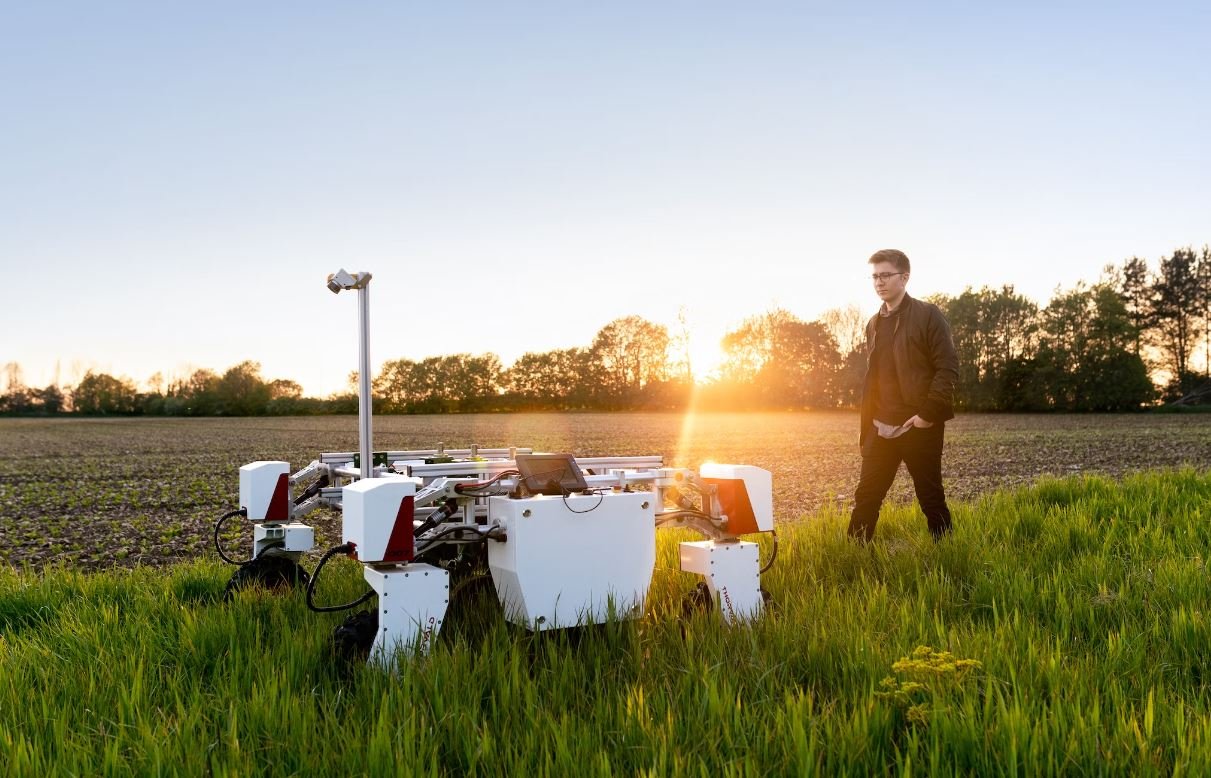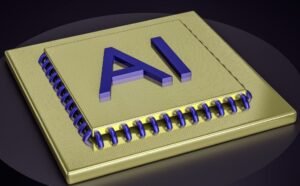Why AI Uses Python
Artificial Intelligence (AI) has revolutionized various industries with its capability to automate processes, analyze vast amounts of data, and make intelligent decisions. Python, a versatile and powerful programming language, has emerged as the go-to language for AI development. In this article, we will explore the reasons why AI utilizes Python and the benefits it brings to the field.
Key Takeaways:
- Python is the preferred language for AI development due to its simplicity, readability, and ease of use.
- It offers an extensive range of AI libraries and frameworks that facilitate the development process.
- Python’s wide community support provides access to a wealth of resources, tutorials, and forums.
Python’s popularity in the AI community stems from its simplicity and readability, making it an ideal language for developers of all levels of expertise. With clean and intuitive syntax, Python allows programmers to express concepts concisely, allowing for faster development and easier maintenance. Its simplicity also reduces the learning curve for newcomers to the field, enabling them to quickly grasp AI concepts and start building intelligent systems.
*Python’s simplicity allows for efficient AI development and reduces the learning curve for newcomers.
One of the key advantages of using Python for AI is its vast collection of libraries and frameworks. These tools provide ready-to-use implementations of various AI algorithms and techniques, saving developers significant time and effort. Libraries such as NumPy and Pandas offer powerful data manipulation and analysis capabilities, while TensorFlow and PyTorch provide efficient deep learning functionalities. These libraries, along with many others, make Python a comprehensive AI development ecosystem.
*Python’s extensive library and framework support accelerate AI development and streamline the implementation of complex algorithms.
| Library | Description |
|---|---|
| NumPy | A powerful library for numerical computing, crucial for AI applications. |
| Pandas | Provides data manipulation and analysis tools, essential for preprocessing datasets. |
| Scikit-learn | An extensive machine learning library with various algorithms for classification, regression, and clustering. |
Python’s vibrant and active community plays a significant role in its popularity among AI practitioners. The community provides extensive support through online resources, tutorials, and forums. Stack Overflow, for instance, has a dedicated Python community that helps with troubleshooting and provides guidance on AI-specific challenges. Additionally, the open-source nature of Python encourages collaboration and knowledge sharing, enabling developers to learn from each other’s experiences and collectively advance the field.
*Python’s active community offers invaluable support and fosters collaborative learning.
Python Usage in AI: A Closer Look
Let’s dive deeper into the specific use cases of Python in AI development:
- Data Preprocessing: Python’s libraries, such as Pandas and NumPy, simplify data cleaning, transformation, normalization, and feature extraction, which are critical steps in preparing datasets for AI training and testing.
- Machine Learning: Python’s primary strength lies in its excellent machine learning libraries, including scikit-learn and Keras, which offer extensive collections of algorithms for classification, regression, and clustering tasks.
- Natural Language Processing (NLP): Python’s NLTK library provides advanced tools for processing and analyzing human language, which is crucial in NLP applications like sentiment analysis, chatbots, and language translation.
| Use Case | Description |
|---|---|
| Computer Vision | Python, along with libraries like OpenCV, enables image and video analysis for applications like object detection, facial recognition, and autonomous vehicles. |
| Reinforcement Learning | Python’s support for libraries such as OpenAI Gym makes it a preferred language for developing and testing reinforcement learning algorithms. |
| Deep Learning | Python’s frameworks like TensorFlow and PyTorch provide powerful tools for creating and training deep neural networks, leveraging GPUs for accelerated computations. |
Lastly, Python’s compatibility with other programming languages makes it an excellent choice for integration with existing AI systems or components. Developers can easily combine Python with languages like C++ for performance-critical code or Java for enterprise-level integration. This flexibility allows AI teams to leverage existing resources and infrastructure while benefiting from Python’s rich AI development ecosystem.
*Python’s compatibility with other languages simplifies integration, enabling AI teams to leverage existing resources.
In conclusion, Python’s simplicity, extensive library support, vibrant community, and versatility contribute to its leading position in the field of AI development. From data preprocessing to advanced deep learning applications, Python emerges as the language of choice for programmers and researchers alike. As AI continues to advance, Python remains at the forefront, powering intelligent systems that shape our future.

Common Misconceptions
Python is the Only Language Used in AI
One common misconception is that Python is the only language used in artificial intelligence (AI). While Python is widely used in AI development due to its simplicity and large number of libraries, it is not the only language that can be used. Other programming languages such as Java, C++, and R can also be used effectively in AI projects.
- Python is popular in AI due to its simplicity and readability.
- Java is commonly used for big data processing in AI applications.
- C++ is preferred for high-performance AI implementations.
AI is Only About Machine Learning
Another misconception is that AI is synonymous with machine learning. While machine learning is an essential component of AI, there are other branches and techniques involved. AI encompasses a broader range of technologies, such as natural language processing, computer vision, expert systems, and robotics.
- Natural language processing focuses on interactions between computers and human language.
- Computer vision involves extracting information from visual data or images.
- Expert systems mimic human experts to solve complex problems.
AI is All About Creating Human-Like Intelligence
Contrary to popular belief, AI is not solely focused on creating human-like intelligence. While human-like AI, also known as artificial general intelligence (AGI), is a long-term goal for some researchers, the current focus of AI is on solving specific problems efficiently. AI aims to use machines to perform tasks that would typically require human intelligence.
- AI is implemented to improve efficiency and accuracy in various industries.
- AI is used in self-driving cars, recommendation systems, and fraud detection.
- AGI, the ability for machines to understand and learn any intellectual task that a human being can do, is still a far-off goal.
AI Will Replace Human Workers Completely
Many people fear that AI will lead to massive job loss and replace human workers completely. However, the reality is that AI is meant to augment human capabilities rather than replace them entirely. AI technology is developed to assist human workers in performing tasks more efficiently and effectively, allowing them to focus on more complex and creative problem-solving.
- AI can automate repetitive and mundane tasks, freeing up time for human workers.
- AI allows businesses to make data-driven decisions more accurately and quickly.
- AI can’t replicate human qualities such as empathy and creativity, which are essential in many professions.
AI is Always Bias-Free and Objective
Another common misconception is that AI systems are always unbiased and objective. However, AI systems are trained on existing data, which may contain inherent biases or prejudices present in society. If the training data is biased, the AI system can perpetuate those biases in its decision-making process. Ensuring fairness and eliminating biases in AI systems is an ongoing challenge that requires careful consideration and diverse input.
- Training AI systems on diverse and representative data can help reduce biases.
- It is crucial to have diverse teams of developers to ensure fairness in AI technology.
- AI systems need regular monitoring and auditing to identify and mitigate biases.

Why AI Uses Python
Artificial Intelligence (AI) has revolutionized numerous industries, ranging from healthcare to finance. Python, a versatile and user-friendly programming language, has become the preferred choice for developers and researchers in the field of AI. In this article, we explore the various reasons why AI relies heavily on Python and how it contributes to the development of intelligent systems.
1. Python’s Simplicity and Readability
Python’s simplicity and readability make it an ideal language for AI development. Its intuitive syntax allows developers to write clean and concise code, reducing the chances of errors and improving efficiency.
| Advantages of Python in AI | Details |
|---|---|
| Easy to learn | Python’s straightforward syntax makes it beginner-friendly. |
| Clear and readable code | The code is easy to understand, which facilitates collaboration among developers. |
| Rich library ecosystem | Python provides extensive libraries for AI-related tasks, such as TensorFlow and PyTorch. |
2. Extensive Libraries and Frameworks
Python offers a vast array of libraries and frameworks specifically designed for AI, simplifying complex tasks and accelerating development processes.
| Popular Python Libraries for AI | Benefits |
|---|---|
| NumPy | Efficient numerical operations and mathematical functions. |
| SciPy | Scientific and technical computing capabilities. |
| Pandas | Data manipulation and analysis. |
3. Supportive AI Community
Python benefits from a vibrant and active community of AI enthusiasts, researchers, and developers who contribute to its growth and provide valuable resources.
| Python AI Community | Characteristics |
|---|---|
| Open-source contributions | Continuous development and improvement of AI libraries and frameworks. |
| Knowledge sharing | Abundance of tutorials, documentation, and forums dedicated to AI development in Python. |
| Collaboration opportunities | Active community events, hackathons, and conferences, fostering innovation and collaboration. |
4. Flexibility and Interoperability
Python’s flexibility allows seamless integration with other programming languages, making it an ideal choice for incorporating AI functionalities into existing software systems.
| Python’s Flexibility in AI Integration | Advantages |
|---|---|
| Easy integration | Python can interact with languages like C++, Java, and more through various APIs. |
| Web application development | Python frameworks like Django and Flask enable the creation of AI-powered web applications. |
| Access to extensive databases | Python’s compatibility with databases allows seamless data management for AI projects. |
5. Power and Performance
Despite being an interpreted language, Python possesses remarkable power and performance capabilities, enabling the development of complex AI algorithms and models.
| Python’s Power and Performance in AI | Features |
|---|---|
| JIT optimization | Just-in-time compilation enhances Python’s runtime performance. |
| High-level abstractions | Provide easy implementation of complex AI algorithms and mathematical operations. |
| Efficient memory management | Python’s garbage collector automatically handles memory allocation and deallocation. |
6. Machine Learning Capabilities
Python’s machine learning libraries and frameworks make it a top choice for researchers and professionals working on advanced AI models and applications.
| Python’s Machine Learning Capabilities | Applications |
|---|---|
| Deep learning frameworks | TensorFlow and PyTorch facilitate the creation of deep neural networks. |
| Data preprocessing | Python provides extensive tools for data cleaning, feature engineering, and normalization. |
| Model evaluation and optimization | Python libraries like scikit-learn offer methods to evaluate and fine-tune machine learning models. |
7. Natural Language Processing (NLP)
Python’s extensive libraries and tools for natural language processing contribute to the development of intelligent systems capable of understanding human language.
| Natural Language Processing in Python | Features |
|---|---|
| NLTK | Python library for processing human language data. |
| SpaCy | Advanced NLP library for efficient parsing and semantic analysis. |
| TextBlob | Library for performing common NLP tasks like part-of-speech tagging and sentiment analysis. |
8. Scalability and Deployment
Python offers scalability and deployment options that facilitate the integration of AI models into large-scale production environments.
| Python for Scalability and Deployment of AI | Advantages |
|---|---|
| Distributed computing | Frameworks like Apache Spark enable parallel processing and distributed computing for big data AI projects. |
| Containerization | Docker allows easy deployment and portability of AI applications across different platforms. |
| Cloud integration | Python libraries like TensorFlow for Cloud enable seamless deployment and scaling of AI models in cloud environments. |
9. Community Support and Updates
The Python AI community ensures continuous updates, bug fixes, and improvements, eliminating the challenges associated with outdated technology.
| Python AI Community Support | Benefits |
|---|---|
| Active development | Regular updates and new features through community-driven contributions. |
| Bug fixes and security patches | The community promptly addresses reported issues, ensuring robustness and security. |
| Long-term support | Python provides extended support for older versions, enabling compatibility and stability for AI projects. |
10. Industry Adoption
Python’s widespread usage and adoption within the AI industry generate a network effect, further solidifying its position as the language of choice for AI.
| Python’s Adoption in the AI Industry | Examples |
|---|---|
| Major AI frameworks | TensorFlow, PyTorch, and Keras are optimized for Python development. |
| AI-powered applications | Popular applications like virtual assistants, recommendation systems, and self-driving cars extensively use Python. |
| Research and academia | Python is the preferred choice for researchers and students in the field of AI. |
Python’s simplicity, extensive libraries, supportive community, flexibility, and industry adoption all contribute to its prominence in the world of AI. As technology advances, Python will likely continue to play a vital role in the development of intelligent systems and fuel further innovation in the field of artificial intelligence.
Frequently Asked Questions
Why AI Uses Python
Q: What is Python?
A: Python is a programming language that is widely used in the field of Artificial Intelligence (AI). It is known for its simplicity and readability, making it a preferred choice for AI development.
Q: Why is Python popular in AI?
A: Python has several features that make it popular in AI. Some of these include its extensive libraries such as TensorFlow, Keras, and PyTorch, which allow developers to easily implement complex AI algorithms. Python’s simplicity and easy syntax also make it a great language for prototyping and experimentation.
Q: How does Python support AI development?
A: Python provides a wide range of libraries and frameworks specifically designed for AI development. These libraries offer high-level APIs and pre-built functions that enable developers to implement AI algorithms without having to write complex code from scratch. Python’s strong community support also ensures that there is a wealth of resources and documentation available for AI developers.
Q: Can AI be developed in other programming languages?
A: Yes, AI can be developed in other programming languages as well. However, Python has gained popularity in the field of AI due to its simplicity, readability, and the availability of specialized libraries and frameworks. Python’s flexibility and ease of use make it an ideal choice for AI development.
Q: What are some popular Python libraries for AI?
A: Some popular Python libraries for AI include TensorFlow, Keras, PyTorch, scikit-learn, and OpenCV. These libraries provide developers with powerful tools and functionality for implementing various AI algorithms and models.
Q: Are there any limitations to using Python in AI?
A: While Python is widely used in AI, it does have some limitations. One limitation is its relatively slower execution speed compared to lower-level languages like C++ or Java. However, this can often be mitigated by utilizing specialized libraries and frameworks that optimize performance. Additionally, Python’s Global Interpreter Lock (GIL) can sometimes limit multi-threaded performance in certain scenarios.
Q: Can Python be used for both research and production AI systems?
A: Yes, Python can be used for both research and production AI systems. Its ease of use and vast libraries make it suitable for prototyping and experimenting with new AI algorithms. Once the research is complete, Python can also be used to implement production-ready systems, either as standalone applications or integrated into larger software architectures.
Q: Is Python suitable for machine learning?
A: Yes, Python is highly suitable for machine learning. It provides a range of libraries and frameworks specifically built for machine learning tasks, such as scikit-learn and TensorFlow. Python’s high-level syntax and readability make it easier for developers to write and understand machine learning code.
Q: How can I learn Python for AI?
A: There are numerous online resources available to learn Python for AI. You can find tutorials, documentation, and online courses on platforms like Coursera, Udemy, and YouTube. Additionally, there are books and forums dedicated to AI and Python that can help you get started.
Q: Can I use Python for both supervised and unsupervised learning?
A: Yes, Python can be used for both supervised and unsupervised learning. Python’s machine learning libraries like scikit-learn and TensorFlow offer a wide range of algorithms for both types of learning. These libraries provide developers with the tools necessary to build and train models using labeled data (supervised learning) or discover patterns in unlabeled data (unsupervised learning).





